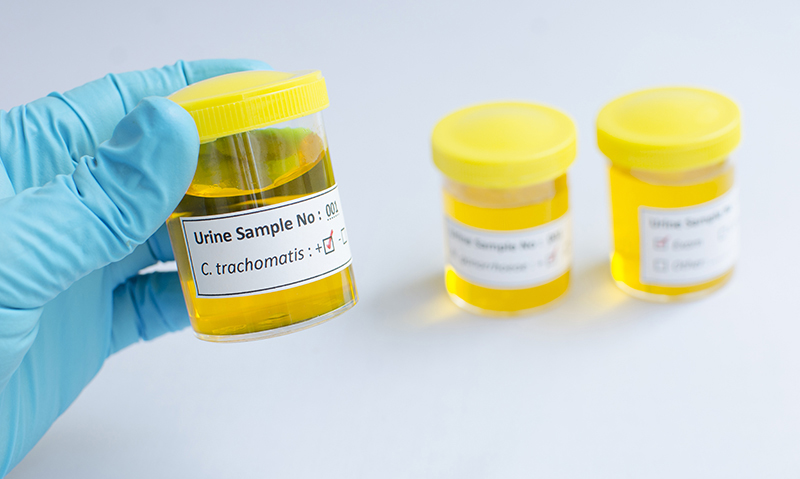ONE in five sexually active young people do not get tested for chlamydia after a request from their GP, according to research, as experts call for more efforts to reduce the stigma around sexually transmitted infections (STIs).
Professor Jane Hocking from the University of Melbourne’s School of Population and Global Health told MJA InSight that this drop-off trend was concerning because “the people that failed to test are also the people who are at a higher risk for infection – so we’re potentially missing a lot of cases of chlamydia in the community”.
“We have to try to ‘normalise’ chlamydia so that a chlamydia diagnosis is not something the patient fears.”
Professor Hocking co-authored the study, published today in the MJA, which looked at the socio-demographic and social factors associated with not providing a specimen for chlamydia testing following a request from a GP. Data on chlamydia testing were were collected from 142 GP clinics participating in a randomised controlled trial evaluating the effectiveness of a chlamydia testing intervention. Men and women aged 16–29 years were included in the analysis.
In 2013, 13 225 chlamydia test requests were made and in 2545 cases a test was not performed, the authors found.
- Podcast with Professor Jane Hocking, University of Melbourne
- Related: MJA — Trends in chlamydia positivity among heterosexual patients from the Victorian Primary Care Network for Sentinel Surveillance, 2007–2011
- Related: MJA — Chlamydia prevalence in young attenders of rural and regional primary care services in Australia: a cross-sectional survey
Analysis showed that the odds for not undertaking a test requested by their GP were higher for men, those aged 16–19 years, those living in areas of greater socio-economic disadvantage, and those attending clinics without on-site pathology collection.
The results highlighted the need for clinics to establish systems which ensure that men and those aged 16–19 years undertake chlamydia tests requested by a GP, the authors wrote.
Dr Jessica Dean, intern at Monash Health and former president of the Australian Medical Students’ Association, told MJA InSight that “the barriers that stop people from completing a chlamydia test are the same barriers that also stop some people from going to their GP for STI testing in the first place – shame, embarrassment and stigma”.
Dr Dean said addressing this drop-off rate would take more than just increasing awareness.
“It’s about changing culture and attitudes around STIs. A lot of young people now do know about STIs, but they still think ‘it won’t happen to me’. More talk about prevalence and incidence rates could help with this.”
Dr Anna McNulty, director of the Sydney Sexual Health Centre, told MJA InSight that while sexual health education was standard across Australian high schools, there needed to be a shift in emphasis.
“Some young people think they’re fine because they don’t have symptoms, so we need to highlight the asymptomatic nature of STIs. We also need to make it clear that testing is easy and treatment is easy.”
Dr Dean said that essential to improving testing rates was creating positive doctor-patient relationships. She is president and co-founder of The Nookie Project, which runs workshops for health professionals about youth sexual health management.
“It is difficult for GPs. Often without realising it, we use language that is loaded with assumptions and stigma – like asking a patient if they have a boyfriend.
“It’s important to establish a good rapport with patients in an appropriate environment,” she said.
Professor Hocking agreed, adding that “some GPs are uncertain about how to raise sexual health topics in an otherwise non-sexual health consultation”.
She said that patients were also discouraged from testing when they couldn’t provide a specimen at the GP clinic, which meant they had to visit a pathology collection site elsewhere.
However, there were practical solutions that could address this particular problem.
“[We should] make sure patients can leave a specimen for chlamydia testing at the clinic and provide brown paper bags or something to disguise that they are leaving a specimen.
“A nurse or receptionist could then follow up with the patient about the specimen before they leave,” Professor Hocking said.
- Video with Professor Jane Hocking, University of Melbourne
- Related: MJA InSight — “Hidden” chlamydia must be found
- Related: MJA — Legislate for patient-delivered partner therapy for chlamydia
Dr McNulty went further, saying that the number of people who see or handle a patient sample should be minimised to just one – the GP.
“Even walking down the corridor to give the sample to somebody else is embarrassing. The GP should request the test, and then have the patient give the sample right back to them. This way it isn’t just handed around,” she said.
Associate Professor Jane Smith, spokesperson for the Royal Australian College of General Practitioners (RACGP) and lead author of the RACGP Red Book, agreed, saying that avoiding a test allowed patients to stick their head in the sand and block out those feelings of shame.
Professor Smith told MJA InSight that the polymerase chain reaction (PCR) specimen could be taken from the first 10 to 20 millilitres of urine passed, at least 20 minutes since the last void.
“So it would be very unusual for a patient not to be able to provide the specimen before leaving the practice.”
She said that the sensitivity and specificity of urine PCR testing for chlamydia was also on par with self-collected swabs.
“I think the real advantage of self-collected testing is for patients who are unlikely to attend [for testing] and for very high risk individuals who need more frequent screening or follow up,” Professor Smith said.

 more_vert
more_vert